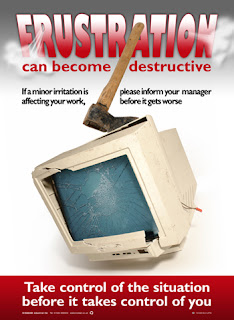 |
| 1 |
 |
| 2 |
 |
| 3 |
At Kodiak we spend a lot of time thinking about accident prevention – it's a subject covered frequently in our workplace poster programme. But, while our programme has been proven to reduce workplace accidents, it would be naive to think that an accident could never happen.
Have you ever been in a building when the fire alarm has gone off? I have, many times now, and I think it's fair to say that no one ever seems to do what they are meant to. Of course, everyone knows that they are supposed to move quickly and calmly to the nearest fire exit, leaving their personal belongings behind, and meet up at the designated assembly point. But that's not usually what happens.
Most people think the alarm is a test – that it will stop in a minute – and they stay where they are and continue doing what they are doing. If it doesn't stop, they conclude that it's probably a false alarm and they still don't move. Some wait until they are told to evacuate by another person. Others are still considering what to do right up until they hear the fire engine sirens in the street outside.
During a stay at a hotel in Edinburgh last year, a kitchen fire set off the fire alarm early in the morning. We left our room on the fifth floor, made our way down five flights of stairs and waited outside, in the snow, while the fire crews went in. After about 20 minutes, during which time the alarm was still ringing, we were allowed to re-enter the building. As the lift finally arrived at the ground floor, we were surprised to see it was full of people from the floors above. "Oh," exclaimed a lady inside the lift, "has there really been a fire?"
It's terrifying to think that so many people are so complacent and that there is any chance that they may not do the right thing if a real disaster struck. This is why we need to remind them.
In the Kodiak programme we ask your employees if they would know:
- what to do if someone is hurt
- what to do if a fire starts
- how to sound the fire alarm
- who their fire warden/first aider is and
how to contact them in an emergency - where the nearest fire exits/assembly
points are located
Of course, they should already know the answers – if they don't, then they need to find out. The right knowledge is a great survival tool and knowing all the answers by heart also means you are more likely to keep a clear head in a crisis.
Following any incident it is vital to gain an understanding of what happened, how it happened and why it happened. For this you need the full support and co-operation of your employees, as only honest accounts will help you establish the true causes and enable you to prevent a recurrence. We have posters on this too.
If you would like to find out more about how Kodiak posters can prepare your employees for emergency situations, please get in touch.










